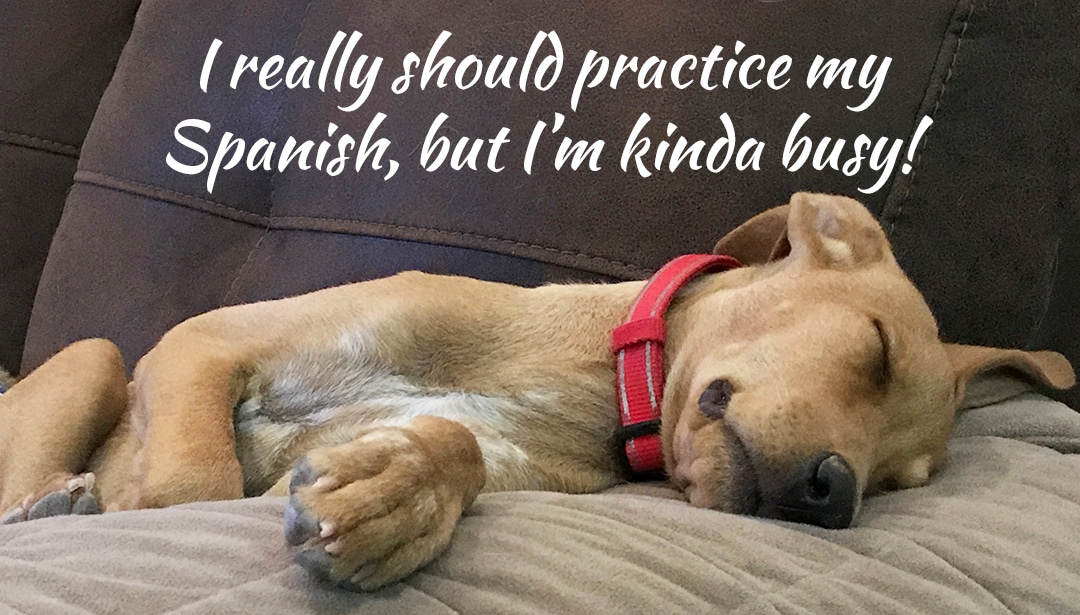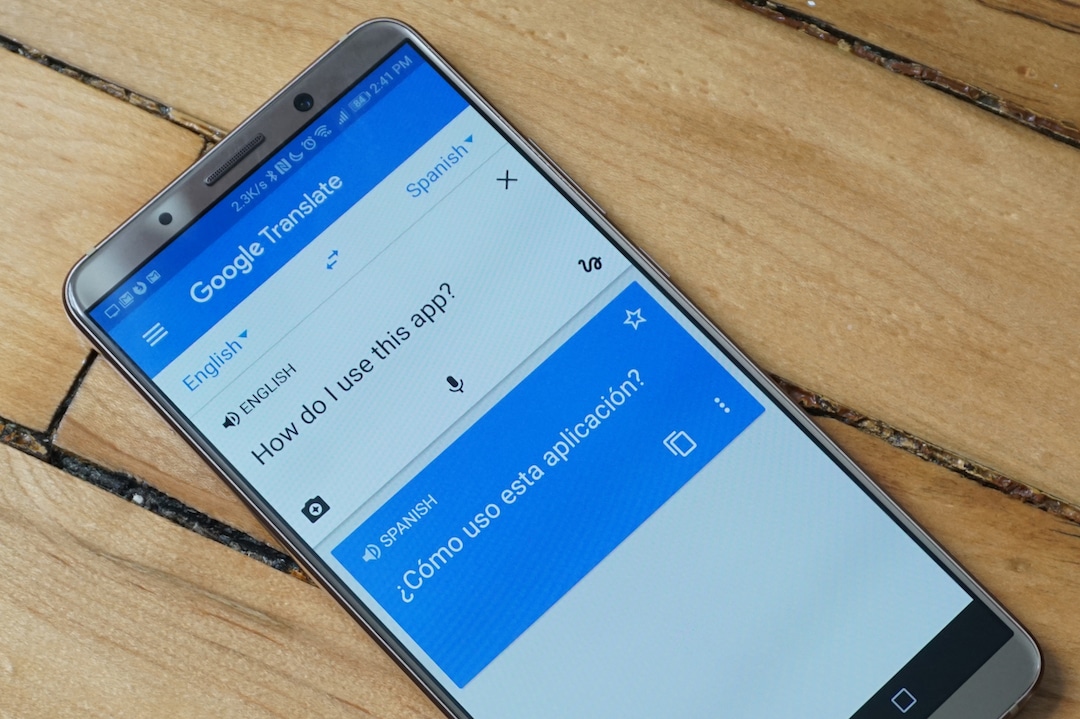Why not? Learning a few Spanish words and phrases can make your Baja adventure that much more rewarding.

If you are contemplating a vacation or a move to La Paz or anywhere else in Baja California Sur, you may be wondering: Will I need to learn Spanish? The short answer is: not necessarily, but it sure helps!
You can certainly get by in the more tourist-oriented areas, such as Cabo San Lucas, without knowing much or any Spanish…but where’s the fun in that? Learning even just a few Spanish words and phrases will make your visit much more rewarding!
La Paz is a little different because it is not a tourist hot spot—that is part of its charm and what draws many people here. However, it also means you can’t count on everyone here speaking English, nor should you! You are in a different country with a different culture and language. Rather than letting yourself be intimidated, we recommend you view it as part of the adventure!
The easiest way to start is to head to a local restaurant or tienda (market) armed with a few key phrases in your phone’s translation app, such as Google Translate. The translations in these apps are often far from perfect, but they will help you navigate the most common situations.
[youtube https://www.youtube.com/watch?v=YVhR5VHYpMw]
Shopping in La Paz tiendas (markets) is a great way to practice your Spanish.
However, it’s not always desirable or easy to be staring at your phone when trying to hold a basic conversation. To help you get started, we’ve put together a list of some terms and phrases that will help you on your adventure. Don’t worry too much about making mistakes, the locals will usually just smile and appreciate your effort, and some will even help you learn the correct way to say it next time! This is all part of the experience, and it gets a lot more fun as you start to engage in actual Spanish conversations.
First, let’s be clear: we are by no means fluent Spanish speakers! This is not intended as a formal lesson, just some terms we’ve learned and found helpful along the way. We ran this post by one of our Mexican neighbors to check it for accuracy, but any mistakes our purely ours!
Let’s start with introductions. Simply saying hello in Spanish is easy to learn, and always appreciated:
Hola: (OH-lah): “Hello.” The “h” is silent. It’s the most casual form of greeting, the equivalent of “Hi” in English.
The casual Hola! is usually followed by a more formal greeting. In Spanish, these greetings change depending on the time of day:
Buenos Dias (BWEN-os DEE-es): “Good morning.” Usually you will hear people say both: “Hola, buenos dias!” You may also hear an abbreviated version: “Buen día,” which is a more casual way of saying “Good day.”
Buenas Tardes (BWEN-as TARD-es): “Good afternoon.” This is the greeting to use from 12:00 noon until sunset.
Buenas Noches (BWEN-as NOH-ches): “Good evening” or “Good night.” Used after sunset.
Now that you’ve said hello, you may want to follow your greeting with a polite, “How are you?”
¿Cómo estás? (COH-moh es-TAH?) “How are you?” Note that in Spanish, a written question will be preceded by an upside down question mark, signaling that this is indeed a question.
Now, you can put together a greeting: “Hola, buenos días! ¿Cómo estás?” And the answer, “Bien.” (BEE-en): “Good.” Or “Muy bien! (MOO-ee bee-EN) “Very good!”
To introduce yourself:
Mi nombre es (me NOM-bray es): “My name is…” (insert your name).
¿su nombre es? (SOO NOM-bray es?): “Your name is?”
Mucho gusto! (MOOCH-oh GOOS-toh): “Nice to meet you.”
When it’s time to leave, you can say:
Hasta luego (AH-stah loo-AY-go): “Until later.” Again the “h” is silent.
You may be more familiar with the term Adios to say “Goodbye.” However, locals tend to use this only when they are truly leaving and won’t be back for a while. So, when leaving a restaurant, saying “Adios” could be taken to mean, “Goodbye, we won’t be back.” Not what you want to convey if you have just enjoyed a wonderful meal!
For extra credit, if you want to let the staff know you enjoyed your visit and plan to return, you can say, “Hasta la proxima vez,” which means “Until next time!”

Now that you’ve learned a few greetings, you need to figure out how to ask for what you want. Politeness is always rewarded, so before you ask for anything, you can say:
Por favor (POR fah-VOR): “Please,” or, Perdón (pear-DOHN): “Pardon me.”
Con permiso (con per-MEE-so) “With permission” when you are trying to interrupt or to maneuver by someone (the equivalent of “excuse me”). The literal translation of “Excuse me” is disculpe, but this tends to be used more when you bump into someone than as a conversation starter.
Una pregunta (OON-ah pre-GUN-tah): “A question.” So you can say, Por favor, una pregunta as shorthand when you want to say, “Please, I have a question.”
Si (SEE) means “yes,” and luckily no needs no translation!
Gracias (GRAH-see-us): “Thank you,” or Muchas gracias, “Thank you very much.” Rather than pronouncing gracias with a “grr,” try rolling your ‘R’ a bit by touching the tip of your tongue just behind your top front teeth. Once you get the hang of this, it’s much more fun to roll your “Rs”!
And of course, No gracias means “No thank you.”
Usted (OO-sted) means “you,” or you can use the less formal “tú.”
Yo means “I”, but be careful, since the yo is typically dropped when used with a verb. For example, to say “I want,” you just say “quiero” (KEE-eh-roh), not “Yo quiero.”
Me gustaría (Mee GOOS-tah-REE-ah): “I would like.” Remember to roll your “R”!
Necesito (neh-suh-SEE-toh) “I need.” Remember, the “I” is implied, so you don’t need to say, “Yo necesito,” just “necesito” will do.
Hablar (AH-blar) means “to speak,” so you can ask Habla Ingles? “Do you speak English?” or you can say, No hablo Espanol which means “I don’t speak Spanish.” If you want to be polite about it, you can say Lo siento, no hablo Espanol. “I’m sorry, I don’t speak Spanish.”
Other common question terms include:
¿Cuánto? (KWAN-toh) “How much?” when asking the price.
¿Cuando? (KWAN-doh) “When?”
¿Dónde? (DON-day): “Where?
These few phrases will get you started saying hello, goodbye, and thank you, and let you ask a few questions. In a future post, we’ll cover “restaurant Spanish,” so you can learn some of the most common terms you need to enjoy the terrific local food. We’ll also cover some different terms for time, including the ever popular “manana.”
Want to learn more?
For some, this may be enough Spanish to get through a short visit to Baja. If you find yourself wanting to learn more, here are a few resources that can help:
Google Translate: a great app to have with you on your phone when you need to ask for something in Spanish. However, it is far from perfect and can offer up some bizarre translations that will earn you a funny look from locals. If this happens, try just translating individual words on their own, or try some of the alternate translations it offers up that may be more prevalent.

Duo Lingo: available for your iPhone or Android device. This handy little app will help you practice basic phrases that are used often.

Rosetta Stone: a bit pricier, but many have had good success using this application to study Spanish.

Online courses such as Synergy Spanish: Can help you start to quickly put together conversational Spanish phrases and sentences.

Spanish classes: If you really want to get fluent in Spanish, try taking one of the many conversational Spanish courses offered here in La Paz at the universities and elsewhere. Antonio Avilés offers weekly classes out of the Institute of the Americas, or you can hire a local to teach you Spanish in your own home.
Hasta la proxima vez…
 " alt="Baja Life Realty" />
" alt="Baja Life Realty" />
I love this newsletter, Rebecca!
Sent from my iPhone
>
Thanks Jan!